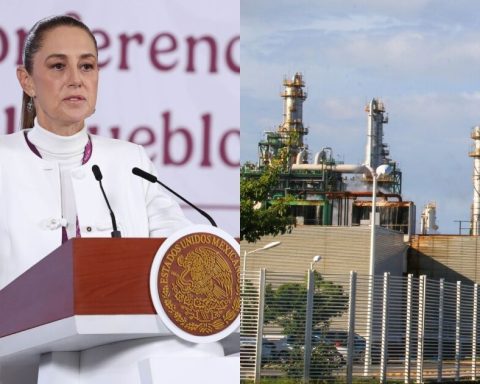Despite the fact that a large part of the countries is still waiting for inflation to stop rising, as well as the increase in rates by central banks to combat this phenomenon, there are hopeful signs that began to occur in recent weeks, since most of the raw materials (commodities) that are traded in international markets began to fall in price.
(Global economic fear takes the dollar to a maximum of $4,198.77).
Although there are still products that maintain an upward trend, during June a decrease in the prices at which they are traded on world stock markets was consolidated, as shown by different indices such as the Dow Jones Commodity Index, among others.
However, despite the fact that several analysts believe that the effects of the current crisis on global supply chains are still they will take to fully normalize until 2023forecast a drop in ocean freight rates in the fourth quarter of this year, as German company Setlog, an expert in software for supply chains, says.
(Reactivation reached mipymes, but the challenges remain).
You can still see, says the company, congestion of container ships in the North Sea and a shortage of containers, to which is added the problem that the port of Shanghai, the largest in the world, has faced due to the confinement before the new outbreaks and variants of covid-19 in China.
The current economic situation has also been affected especially by the military conflict in Ukraine after the invasion of Russia in the third week of February, which affected supplies of products such as wheat, as well as fertilizers produced by the two countries.
GOOD OR BAD NEWS
Javier Díaz Molina, president of the National Association of Foreign Trade (Analdex) says that freight rates “have been falling compared to the levels that were at the peak of the pandemic, but they have not returned to pre-pandemic levels.”
He considers that what it shows is “the lower dynamics of world demand and what is being seen is that inflation is passing the collection account because the rise in rates affects that demand.”
ensures that the prices of the main metals have been falling and that has been showing the fall in demand, which incidentally affects the dollar due to fear of the effects on the world economy.
For Edgar Jiménez, professor of finance and of the Financial Laboratory of the Jorge Tadeo Lozano University, in June there was already a decrease or moderation in the prices of commodities, “what the indices show going down, because a great decrease is seen, a phenomenon that It is worldwide, but it lands in Colombia”.
The academic assures that inflation in Colombia will continue to be high for a couple of months, but then it will begin to normalize. “In the second semester it can be moderated,” he says.
Another important issue that affects or benefits the prices of raw materials is maritime freight, since in the most difficult part of the pandemic these were up to US$11,000 and currently they are between US$6,500 and US$7,000, rates that are governed by supply and demand, but which are still above the pre-pandemic, in 2019.
RELATIONSHIP WITH THE DOLLAR
An additional element related to commodity prices has to do with the fact that there is a inverse relationship between these and the value of the dollar globally.
For the executive director of Economic Studies of the Bolívar Davivienda Group, Andrés Langebaek, “there is a downward reaction of commodities such as products such as copper and oil, especially and related to the fact that the dollar has been appreciating globally and when this happens the other commodities tend to go down”. In addition, there are fears of a global recession and the demand for raw materials is low. “80% of commodities have dropped in the last two weeks,” he says.
For Camilo Pérez, head of economic research at Banco de Bogotá, oil has stabilized, wheat falls 30% and that helps global inflation, but he warned that the food component at the international level may take up to eight months to be done. effective locally. “Perhaps by the end of the year they will help Colombia with that drop,” he says.
BRIEFCASE

















